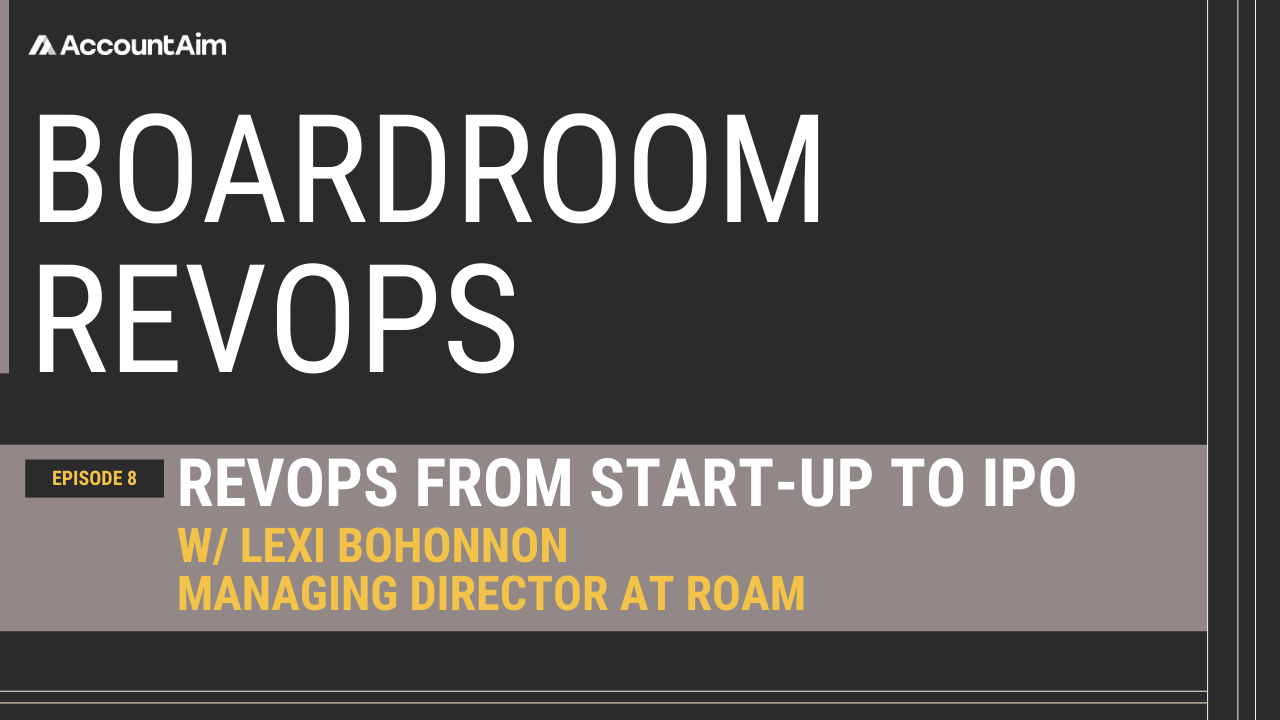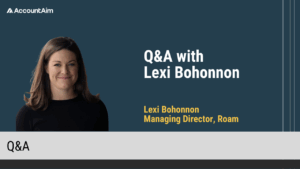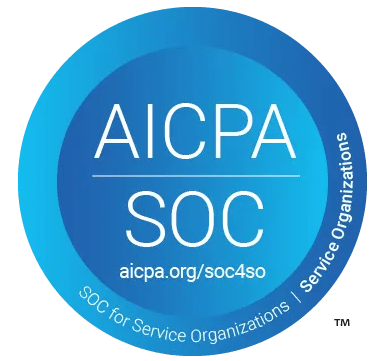How does sales leadership ACTUALLY perceive RevOps?
I got the answer from an awesome GTM leader, Lexi Bohonnon.
She is the first non-RevOps leader on our Aim for Excellence series and it was full of wisdom for RevOps folks.
Over 10+ years, Lexi helped Yext scale from start-up to public company, leading various teams, including sales engineering, CX, and Enterprise Sales.
She’s recently reunited with a lot of the Yext band at Roam, the buzzy virtual HQ start-up.
We cover a lot of great stuff in our conversation, but my favorites include:
- What makes a great RevOps partner from the perspective of a GTM leader
- Common RevOps pitfalls when scaling
- How to align sales and marketing
- The benefits of building your own personal board of advisors
Take a listen and share your thoughts!
Full transcript:
thanks everyone for joining us on our aim for excellence webinar series, where we’re breaking down strategic operational and career related best practices and rev ops with leaders in the space that we admire. Again, I’m James co founder of AccountAim or go to market data and automation platform that streamlines account based sales territory management for B2B sales teams.
I’m really excited to have Lexi Bohannan on today. She’s a managing director at Rome after a really impressive run leading numerous teams at Yext. Lexi, do you want to share a bit more about your background for folks? Yeah. Thanks so much for having me. I’m excited to be here. I started my career at IBM I had a tech bootcamp there for a couple years in consulting and had the opportunity to join Yext.
Back in 2014, we were about 30 million in revenue a little over a hundred, 150 people and scaling and growing quickly. So over a 10 year plus. Run at next saw the company scale from that place to over 400 million in revenue global offices around the world. And had a ton of fun doing so in a variety of different roles as the company grew.
And then had the opportunity to join Howard and the founding team here at Rome. And joined this summer. So I’m back to square one in build mode. And super excited to be here. Yeah, we were just talking about how you’re back in player coach mode after being pretty senior at Yext. So it’s probably fun to get back in the thick of it.
Happy to chat about your experiences, whether it’s at your, decade long career at Yext or at Rome. I know you’re just a few months into Rome. So I suspect that a lot of your experience will be about Yext. Just to set the stage, but I’m really excited to have you on because of all the different orgs that you’ve been in and run.
And so I think you have a really unique, probably perspective. And also you’re our first guest who is not a RevOps specific practitioner. So I think you’ll bring an interesting lens to the other side of the table as it relates to working with ops. Yeah. So I’d love to hear from your experience.
RevOps is a broad term. It’s defined slightly differently by everyone. So how do you think about it and define RevOps? Yeah, and it was it’s an awesome question because it’s changed so much over the last decade as well, which we can certainly get into. I think about Rev Ops as the systems, the processes and tools really that enable a team to facilitate the most effective customer journey.
Whatever that means at the certain stage of your growth, right? So I think that one of the biggest pitfalls that teams fall into is Being super rigid in that from a rev ops perspective and not letting kind of the customer journey rule. And so for me, when I think about revenue operations, it’s all the things we need to do to facilitate the best customer experience and the customer journey.
I think that’s really well put. Are there any kind of examples that come to mind as you think of even defining the customer journey? Because even that you could unpack a full session with, right? I think it’s the whole smattering, right? I think it’s like from the beginning of the buyer journey, whether that is inbound outbound, whether it’s nurturing, any.
Part of that buyer journey and all the pieces that go into it to then that handoff between pre to post sale, which is historically always a clunky thing. As well as then what kind of sustainment of the life cycle of the partnership looks like. So Everything from the onboarding to the build out if that’s relevant to your product to then that first business review and showing, the return on investment to then talking about the renewal and implementing new product and the upsell.
I think it’s the whole entire journey. And I think that What I’ve seen over the course of micro so far be some of those common traps or pitfalls is thinking about rev ops is too rigid, or we can talk about to having broken out teams that are not aligned to the same leader for each step of that journey.
Totally. And we have a strong view at AccountAim that Rev Ops has the potential to be like one of the most strategic functions at a company because they should have this full view both on the ground but also operational. And so often that gets lost to your point. Maybe I’d love to hear how was this structured at Yex.
So you, I think you led enterprise sales, CX for a time, you’re involved with sales engineering. How did you plug in with Rev Ops and how, how are they most helpful for you across these various functions? Thanks. Oh, man. Yeah. So there, there were so many different phases of RebOps over that 10 year span.
The beginning, it wasn’t a thing, right? It was, really just, we had a variety of different roles. We had an account coordinator role, which kind of was a blend of an early BDR, as well as a RebOps strategist and helping to think about the pieces of the journey and supporting the sales team, the CS team, all of that.
And then, of course, really morphed into a real function. But for so many years, sales ops was separate from customer ops, which was separate from marketing ops, which was separate from product ops. And a couple of years ago, our chief strategy officer at the time was adamant that we needed to consolidate those organizations into one revenue operations group with one leader and a consolidated function Eliminate the classic finger pointing in silos of this is happening because of this and different data sets being brought to the table and used as fodder that were coming from the same place, but telling a different story and it was inefficient.
It was not customer centric and it was creating, our own headwinds at the time that were really unnecessary. And so that to me was a big unlock. I was chief customer officer at that time and it was. For me and for some of the teams Oh, shoot, this stinks. Like we don’t have our own identity.
We’re not going to be able to, on the customer side, best represent the customer or sales ops. Like we’re not going to be able to best do the things we need to do. But I think in time, as so many have seen, and as all of you see based on the trends in the space, having that consolidated team creates.
A much, much more strategic end to end customer journey and customer function, starting with the buying journey and ending with, the upsell and hopefully driving that net retention. I think that’s so well put. What do you think a layer deeper that fear as a leader comes from to lose your own, like dedicated ops resources?
Look, I think that in so many cases Rev Ops professionals are very process oriented, right? They’re thinking about how to get from one place to another and then putting the process in to scale, to be repeatable to look at what was success in, the micro stage and then get there, as you scale.
And so in some cases, those tendencies often lead to an unwillingness to break from the process. And so I think that fear Ties back into that. Oh, man, we’ve really, we know what success looks like. We’ve structured the way this is how we do it. And the idea of having to go back into the board and revisit all of that and maybe be challenged in many cases is a scary thing.
And so I think ultimately, getting the groups back together is an incredibly valuable thing. It just can take a little bit of change and heart heartburn as people grow and scale. Okay. What was that process like? If you can recall, I’m not sure quite how long ago it was, but to go from siloed to connected, it was a lot faster than you might think.
It took, the prep and the planning for it before we announced it took a while. A lot of. Smart people in rooms at whiteboards taking all the talent and thinking through skill sets of the team. The needs of the customer as those kind of two main pillars of okay, here’s what we know our customer base needs, our power buying journeys changing, how are like customer satisfaction and kind of that sustainment phase looks like for Successful renewal and then Who are the people that we have?
What are the skill sets that we have? And how do we bring one org together without maintaining silos of okay here’s the sales way. And here’s the CS way. It’s no, we need to bring that together. It was a moshing of our talent with the customer need and then coming up with our first draft.
Like we didn’t nail it on the first time we made some changes, added functions, but thought more holistically about Business strategy and insights and analytics tools, some of the standard silos that, that exists in the function that we didn’t have. Enablement broken out for the whole thing versus, the silos.
And we pulled all of that together in one master. We call it go to market strategy and operations at Yext. Other name for wrap ups. Yeah, that’s great. How about on the data front? You mentioned a lot of the data with silo. Now, is this a technical issue where you had things in different systems and, they were maybe even using different kind of objects, I’ll say, or is this more of like just a process?
How we define things, how we talk about things. It was the latter. It was totally the latter. And, different ways of computing different things different dashboards, different views. We used a variety of different visualization tools. Everything was in the same place, in the same Salesforce in one Clary.
But at the time, we had a CS team using Salesforce as a CSP. We didn’t have a CS, a dedicated CSP in place outside of Salesforce. We had teams that have different access to things. We had a product organization that was, doing more of their own and building some of their own stuff versus, singing from the same song sheet and then marketing again, totally on their own silo had their own kind of marketing ops.
And that I think created so much of the disconnect. That’s classically in the sales process of the marketing pipeline numbers. We don’t believe those aren’t right. That, yeah. By having enabled, having different orgs supporting operationally and strategically, those two departments facilitates more of that finger pointing.
But when you have the one, it really cuts the noise pretty quickly. Cause it’s like, Hey, here’s the data. Like it’s all coming from one place. There’s no story being scripted. It’s all coming from one place. Yeah, this may be my last question on the subject and thanks for letting me interrogate you there.
But I think it’s so interesting because it’s like the biggest problem in so many go to market orgs is the misalignment and the finger pointing. So you combined the ops team into one, you’re looking at things the same way How does that stop? Like the finger pointing though, right?
There’s still always gonna be like marketing because I’m, I’m generating enough leads and sales says they’re still bad. So is there something you have to do beyond that to really solve this root issue? Or was just the common language really enough? I think certainly not enough. It’s always there, right?
It’s it’s a, one day maybe we’ll look back and laugh and say, yeah, this solved it. Someone’s going to solve it, but it’s always there. But instead of having separate meetings talking about, the dashboards and reports, it became one. And so it, it was like, Hey, here’s what it is.
Here’s the leads. Here’s the quality. Here’s how they’re converting, and in that same leadership meeting once a week, marketing’s reporting on what was generated that week. And sales is reporting on how they actioned what was generated on the previous week. And. It’s rather than it’s the cycle is much more condensed versus that quarterly check in that says, Here’s the big giant number of marketing qualified leads from the quarter.
Here’s what sales acted on as we went down the funnel and oh, shoot, looks like we had another issue where we’re so far apart that the quality of the marketing lead did not. Get down to a sale. Why? Oh, they were, whatever the conversation is, it’s typically happening too late versus in that week.
We’re sitting there talking about what happened the previous week or, on the inverse, marketing being frustrated that AEs aren’t following up on leads quick enough. They’re sitting in their inbox. They’re not actioning them. It makes it a lot different conversation when, you have that first line sales leader sitting there hearing, Hey, here’s the leads that have been generated on and the following week, they know exactly the ones that, are still sitting there and need to be actioned.
And by the second or third week, we’re not talking about them anymore because they’ve been followed up on. So it, it creates a different conversation and narrative versus the looking back in time and then finger pointing. It makes so much sense. Yeah, just the frequency. It forces you to work through the pain, right?
Whereas if you’re just meeting occasionally, it’s eh, we can just ignore this and, not worry about it. But if you’re in that meeting and it’s painful every single week you just have to work through it, right? Yeah, you have to work through it because it’s like, You can’t move on.
It’s like it’s here. It’s the second week in a row. What are we going to do differently? And if it’s the third week in a row, whatever we’ve been doing the past two weeks hasn’t been working, so let’s try something different. It’s really like bringing back a bit more of a startup mentality to a bigger company and growth.
I love it. Yeah. The last thing on this topic that I’ll just cap off with is. I think that customer journey is such a good point in the data foundation. It’s shocking to me how many companies and their sales orgs are in marketing. They’ll do an ICP analysis, but not take into account renewal retention rates and who they’re targeting.
And like this, you’re going to create an example like that a million different times, but you just got to connect it all for the sake of the business or else there’s always going to be problems. Totally. Yeah. That’s a good point. Yep. I’m curious. We’ve had some RevOps leaders on and we’ve asked them what is a good RevOps lead look like?
And I always wonder even with myself, like how self aware are people? So you’re, I would say on the receiving end of a lot of RevOps work, right? So from your perspective, like what does a good RevOps lead look like to you? So I think an awesome RevOps lead also is thinking about the customer.
Their customer is. The company’s customer as well as each one of those constituents and leaders, depending upon how the revenue operation or the revenue organization is structured, their customer is also each one of those leaders because, they’re building things for those leaders, but they’re also ultimately needing to build those things for those leaders with a lens for the end customer because It’s so often that we can get myopic about sales needs this, like our CS org needs this.
It’s why do we need that? And is that ultimately going to put us in a better position to service the customer, the prospect, whomever. And I find that the best rev ops leader are that check and balance on, okay, I have multiple different types of customers, but I’m going to have all, I’m going to weigh them all equally and make sure that we’re not going too far down a rabbit hole that puts the other one at risk.
I think it’s well, but I think it’s so common for a rev ops role to Devolve into being an order taker and just putting out fires, but you really have to, think through things scalably and be proactive, but you also need to figure out what actually matters. I look I think the leaders, the business partners the best ones that are out there, depending upon how the organization is structured are an integral part of, that revenue leaders weekly.
Leadership meeting like the Rev Ops business partner is on it. They are, a constituent in the call. They are reporting on things that they need from the team, but they’re also then commenting on observations. They’re a critical part of that revenue leaders organization so that they feel that they have the voice to call out things where they see they’re going astray.
They’re not just answering to the asks or the wants of the team or the report that needs to be pulled or the analysis that needs to be done on X. They’re also willing to stand up and say, Hey, sales leader. I’ve noticed this thing isn’t working and every week, there’s a different excuse.
Let’s figure something out here. And so to your point, the or just being the order taker isn’t going to cut it in terms of really putting the customer and the revenue leaders in the equal footing. Yeah. And I empathize because there’s so much to do is I think it’s so important for a Revon’s leader to build a foundation for themselves so that they can take a step back and, take the 20, 000 foot view.
Other than just the opposite of what we described, were there any other pitfalls for a Revon’s leader that you’ve seen, in your career so far? I think another one is, as scale and growth can be happening really quickly, holding onto the processes that got you there in the first place, because it’s like this worked and this has always worked.
So we have to keep doing it. I think that is a pitfall that I’ve observed. It’s easy. It’s hard to not do that, right? It’s like you worked hard, you put something in place, it got you to where you are and sometimes. You need to abandon it completely. And that’s also a scary thing. It feels like, what the heck?
Maybe what are we doing? But sometimes starting from scratch is okay. And revisiting the things that got you there or just revisiting with a totally blank sheet of paper, the process that needs to get you to the next stage. And I think too often leaders are trying to retrofit or kind of evolve a model when they could be better just starting from scratch and doing something entirely new.
Yeah. I think blank sheet of paper and starting from scratch is maybe a good segue. So you are, a few months into your new gig at Rome with all these learnings from Yext and, I’m sure Rome is a different model and, it’s a very modern company. As you think about the foundation, we had a great conversation around customer journey and I’m sure that’s top of mind for you.
Anything else you’re thinking about as you build the foundation at Rome and you’re being really conscious of? Yeah. It’s Rome is a really fun challenge because it in many cases is a very familiar type of product, right? People use slack and zoom and collaboration tools like teams and Calendly and fireflies and otter and all these things that are also baked into Rome.
So in many cases the evangelizing of a new idea is or an entirely new idea of a way of doing something isn’t that the thing that takes time in that buyer journey. It’s more of timing and organizational structure. And in some cases for companies looking to make a change in the way their team collaborates, there’s a trigger.
Is it they’ve brought on a new leader, they decided to abandon their real estate portfolio and they want to invest in, different types of teams. They’ve expanded into a new time zone and they’re, struggling to figure out how to collaborate across teams, or they’ve just realized that the, nine to nine to six of back to back zoom calls every single day isn’t the way.
And then, starting at six, trying to dig out from your Slack is not the way of the future. And it was the way, because it was what we. Came to know, especially in covid with the change in the world, but that’s not going away. We’re not going back to how it was. And so we’re really thinking about building tools for the here and the now, the companies that are either fully remote to distributed In office across, different countries, the biggest companies in the world are inherently distributed because they have offices all over the world at different time zones.
And so we’re thinking about solving those challenges, but we’re also thinking about what it means to self serve, the familiarity of a platform like Rome. Make it really easy in kind of a wizard like experience for someone to get up and running as efficiently as possible without, a big laborious onboarding process or, change management process that can be the case when you’re changing tools, especially tools that you live in all day, every day.
That’s another thing that’s pretty cool about Rome is that we’re building something that we also use all day, every day, which is pretty rare. There aren’t a lot of software companies out there that you use all day, every day. And that’s the thing you’re also selling. So that’s, it’s B2B, but B2B2C too, in many cases, we think about the business and the consumers all the time.
Yeah, it’s a big ambition for sure. There’s a lot you’re covering, but I think it’s really cool that you guys get to live in it. I think the B2B2C piece is really awesome, too. That’s probably a good place to wrap up. I know we’re almost at time. I wanted to do like a rapid fire finish here a couple questions we like to ask.
I’ll start here. Maybe the biggest myth about RevOps, in your opinion? The biggest myth about RevOps is that they’re too process oriented. I like it. You’ve worked with a lot of sales reps and from a lot of different angles, what’s your biggest pet peeve of sales reps? Oh, the finger pointing, it’s not my fault, it’s someone else’s fault. I’m not meeting my quota because X isn’t happening.
Oh, that’s a fair one. How would you describe a great RevOps leader in three words? I would say customer centric and gritty. I like Gritty. We haven’t heard that one yet. And usually we’ll ask a piece of advice for someone starting in Rev Ops, but I’m going to change this one for you cause you’ve done so many things and you’ve worked on the early stage a couple of times.
What’s your biggest piece of advice for anyone joining an early stage startup? My biggest advice would be the same also for someone starting off in Rev Ops is own board of directors. And what I mean by that, because you hear that all the time network with other people in your role at other companies, all different types of companies and do it to do a variety of things, one, to, learn from their experiences, but two, most importantly, I find regardless of where you are in your career journey, especially if you’re on the earlier side, it’s a really awesome way to gain credibility.
And bring insights to the table when you haven’t done it before. And so as you’re going through those early stages or growth stages, entering a new stage at a company, no matter how big it is there’s a lot of experts around the table. There’s always someone who’s been there or seen it. And I found that in order to contribute to the conversation, you don’t have to feel like an imposter.
You can still bring insights and perspective that are really relevant based on, having a network of people who are going through the exact same thing as you at other companies. And I found that to be a really valuable way to, to be able to contribute when maybe you haven’t gone through that thing before.
That’s fantastic. I’m inspired and you practice what you preach. Cause I know you’re an advisor to a few startups out there. And you’re taking calls with folks like me. So Lexi, thanks so much for the time. I know you have a ton going on. I thought this was super interesting, super helpful. Anyone that’s listening.
If you have questions for Lexi, shoot them to me and I’ll track them down for you. And also happy to chat account name and go to market data anytime. Thanks Lexi. Thanks so much for having me.








